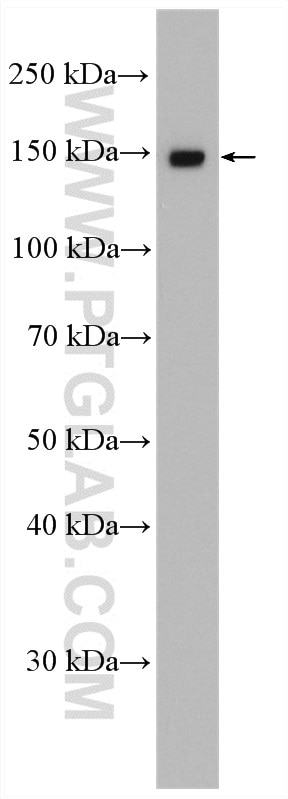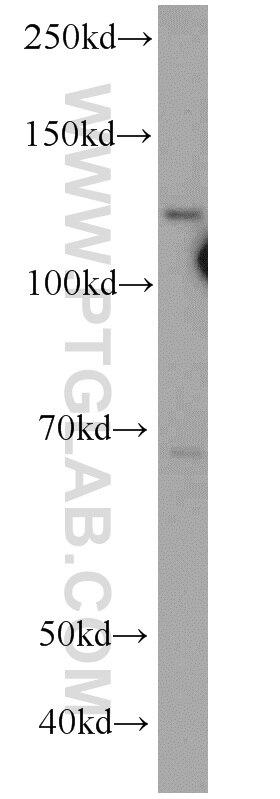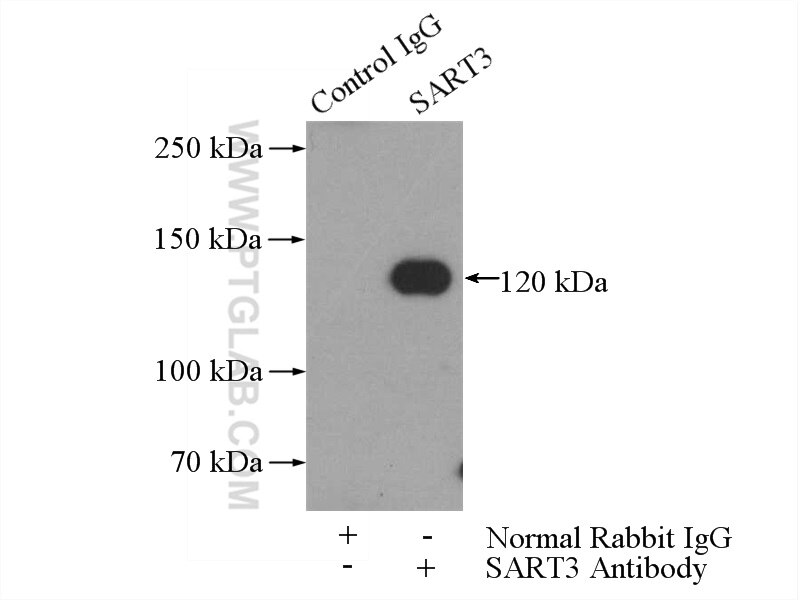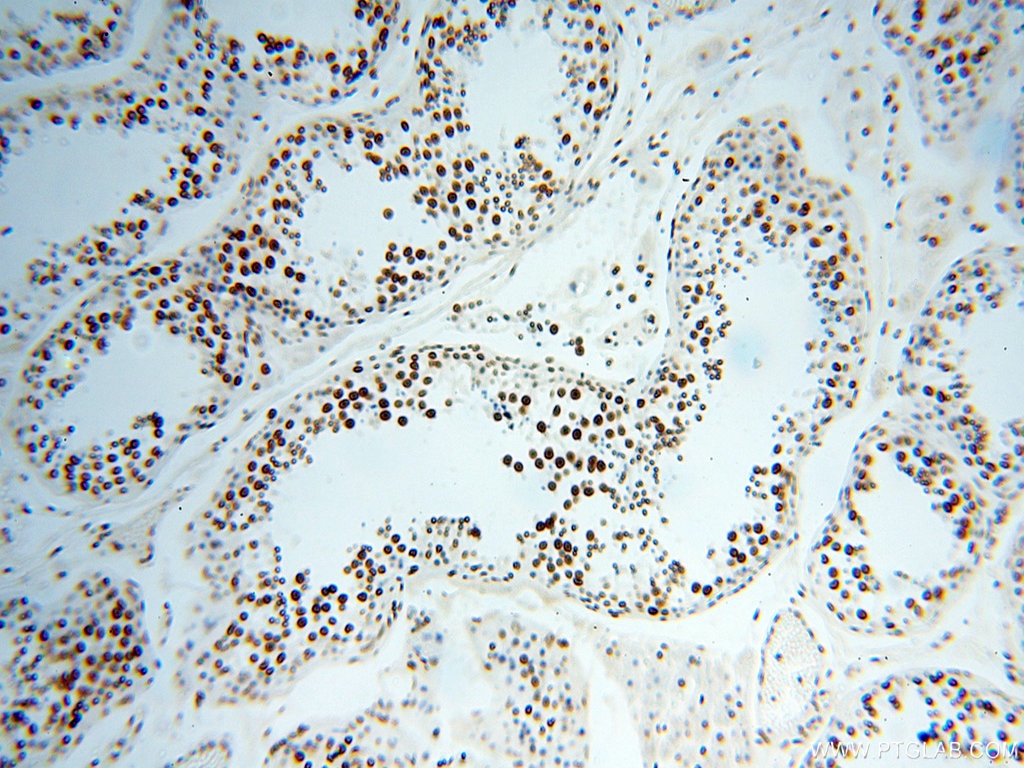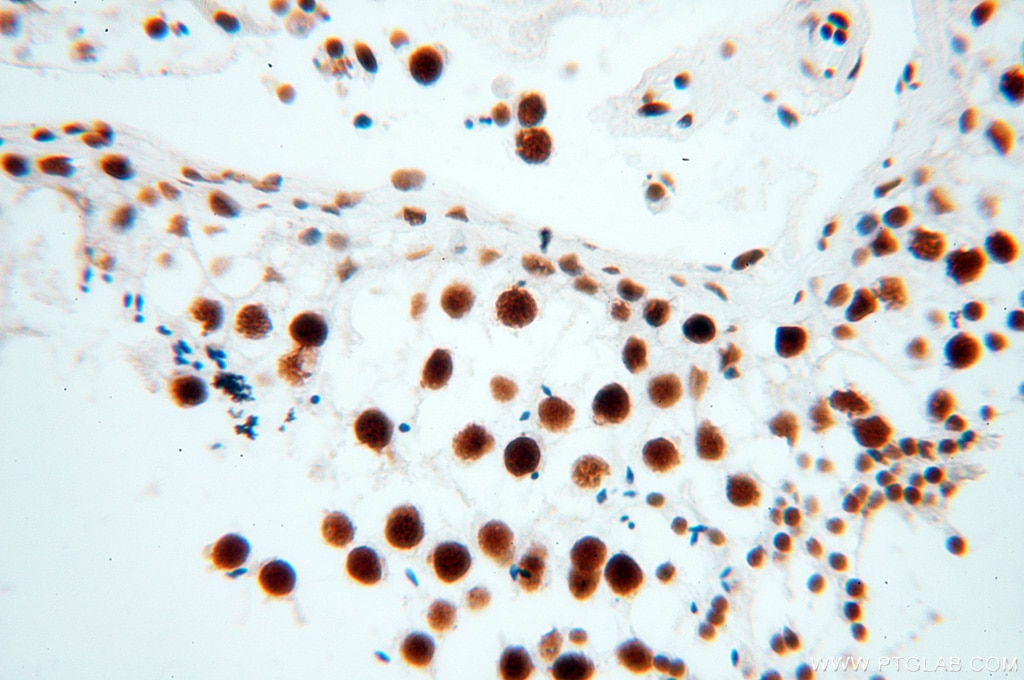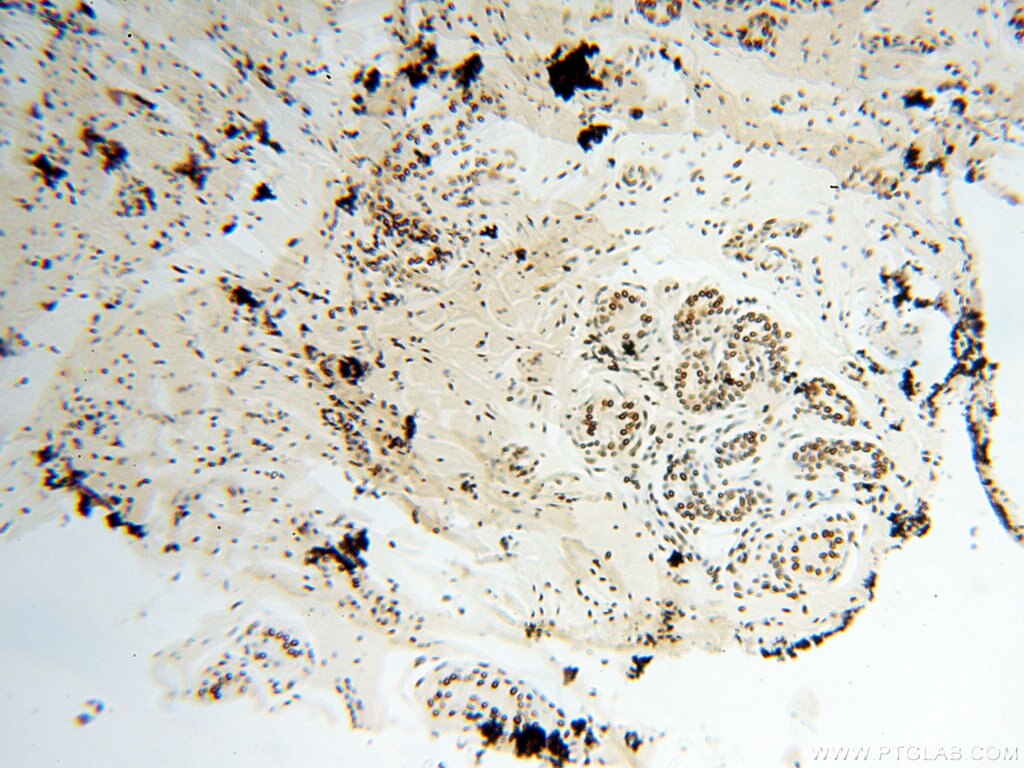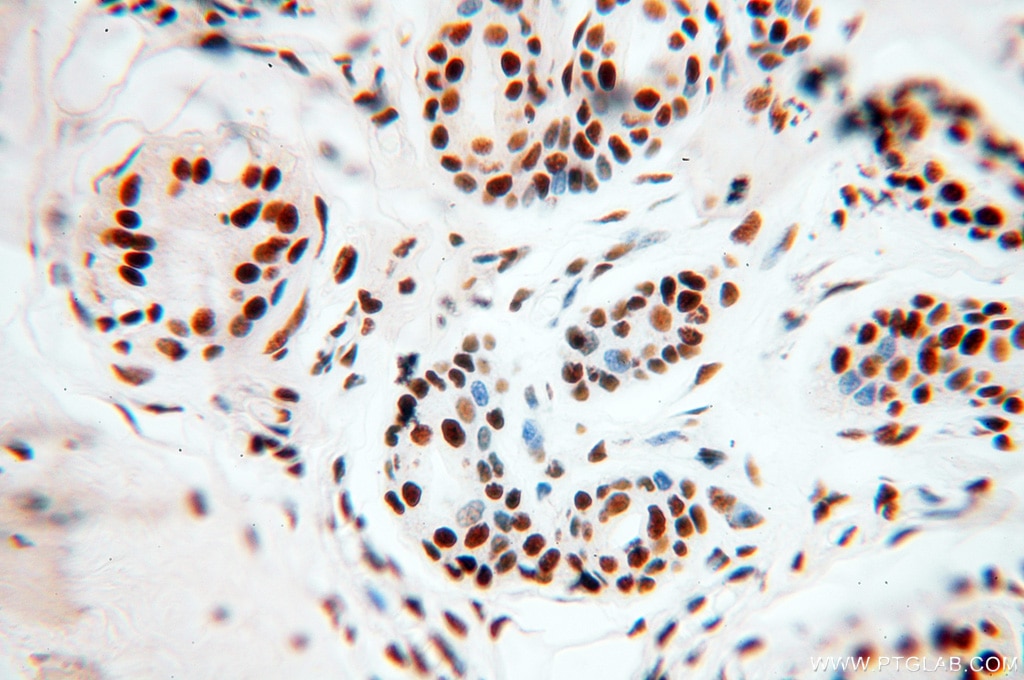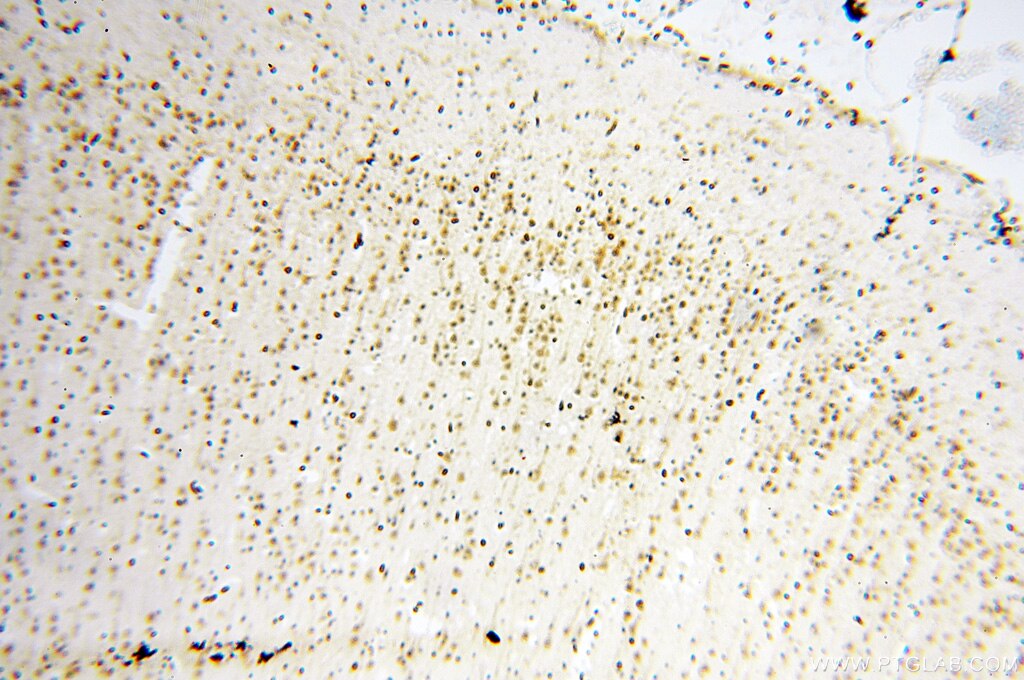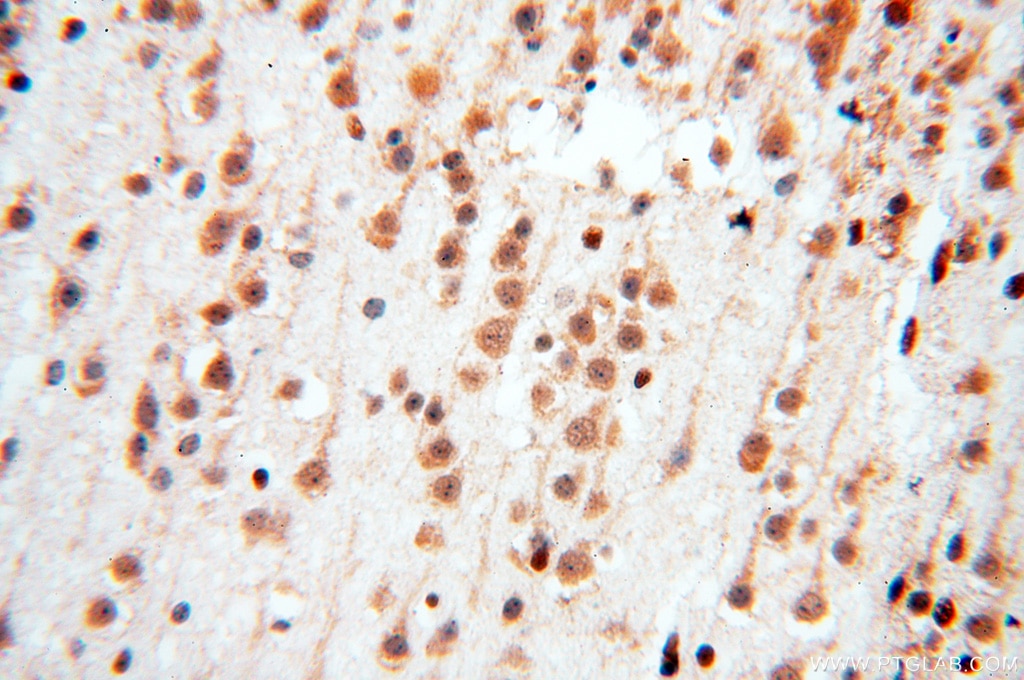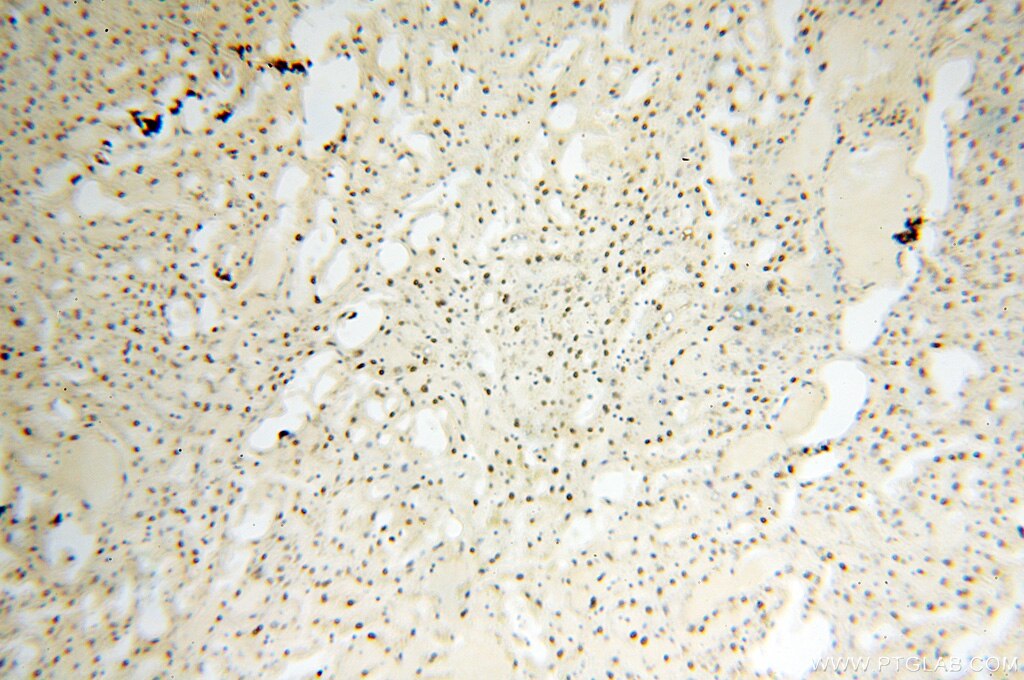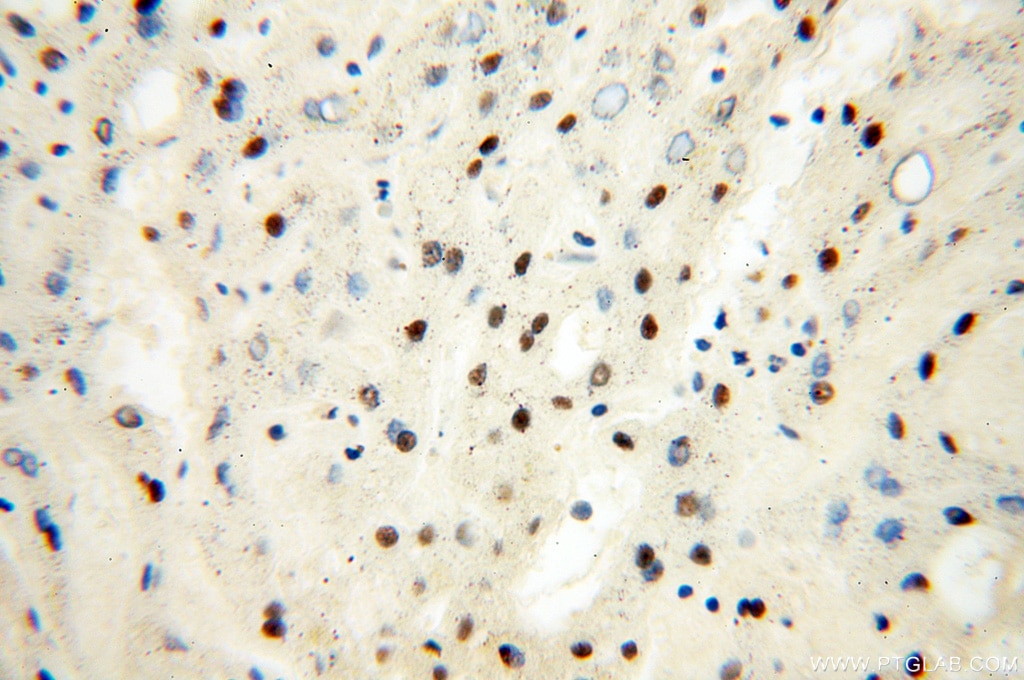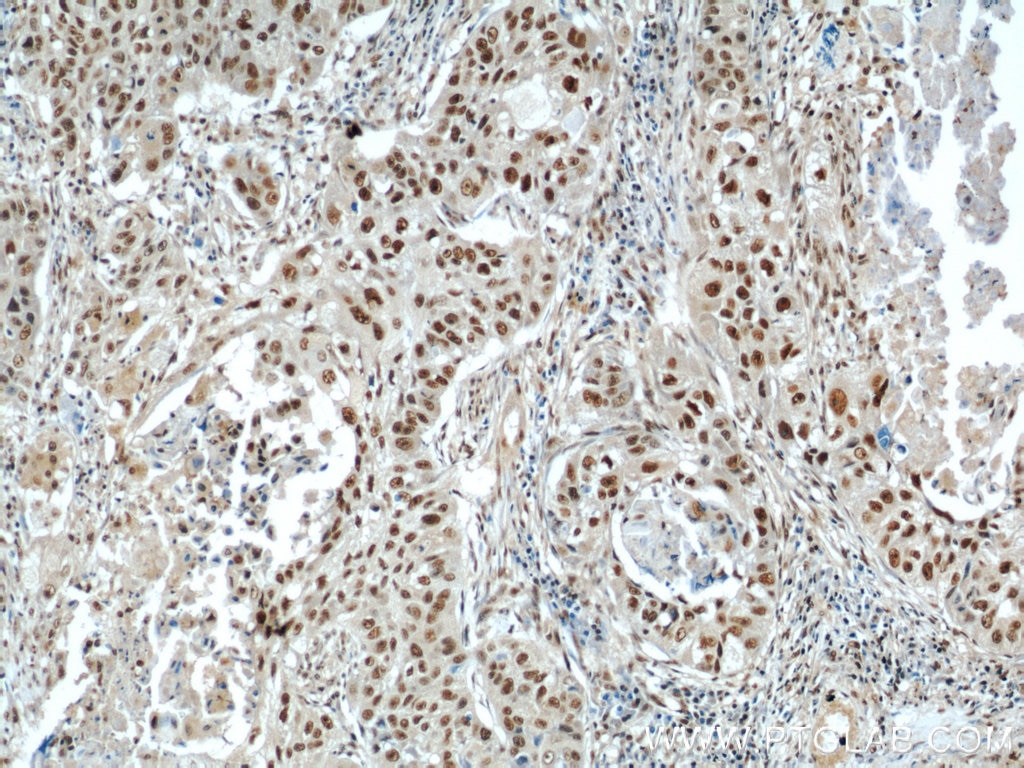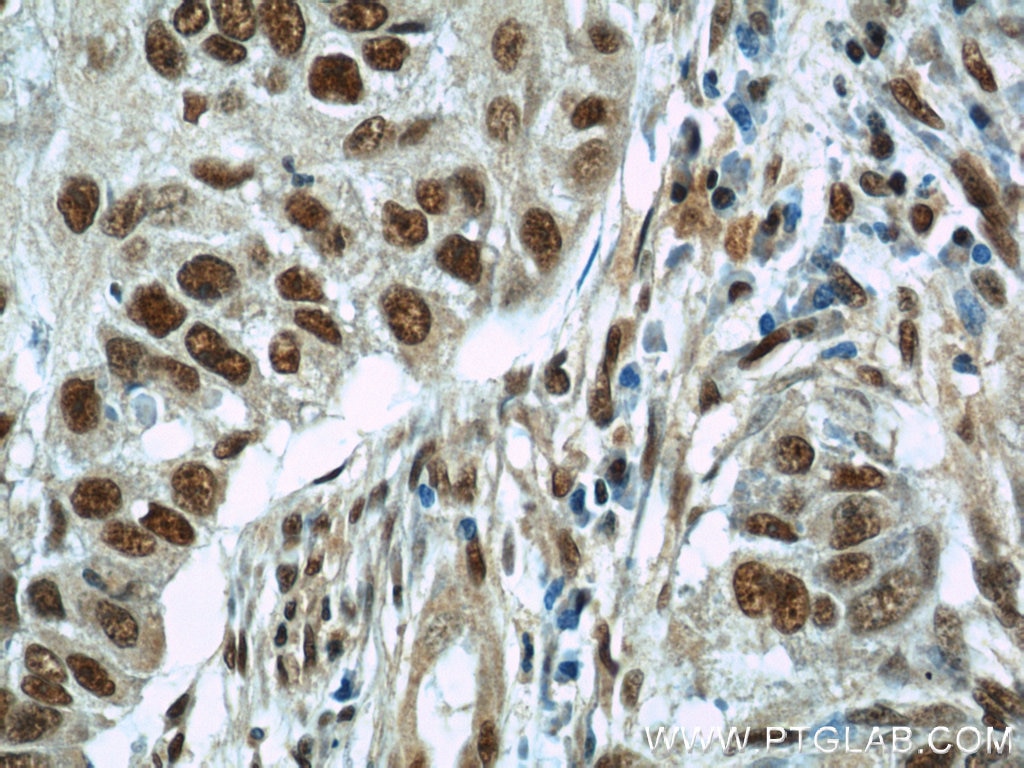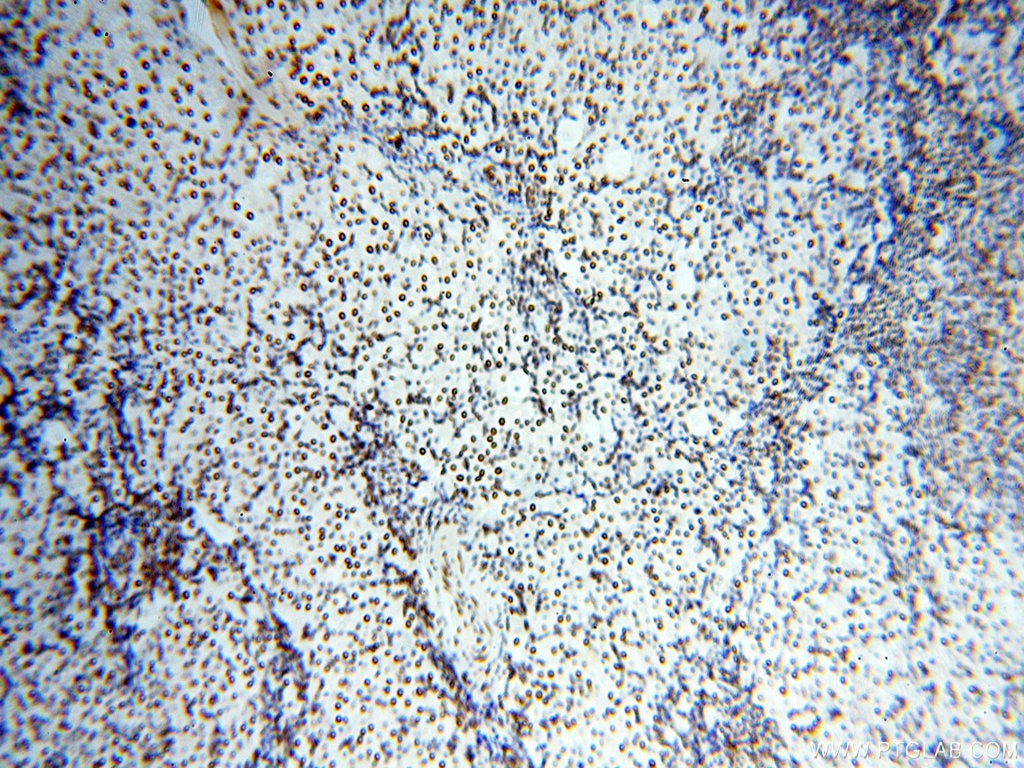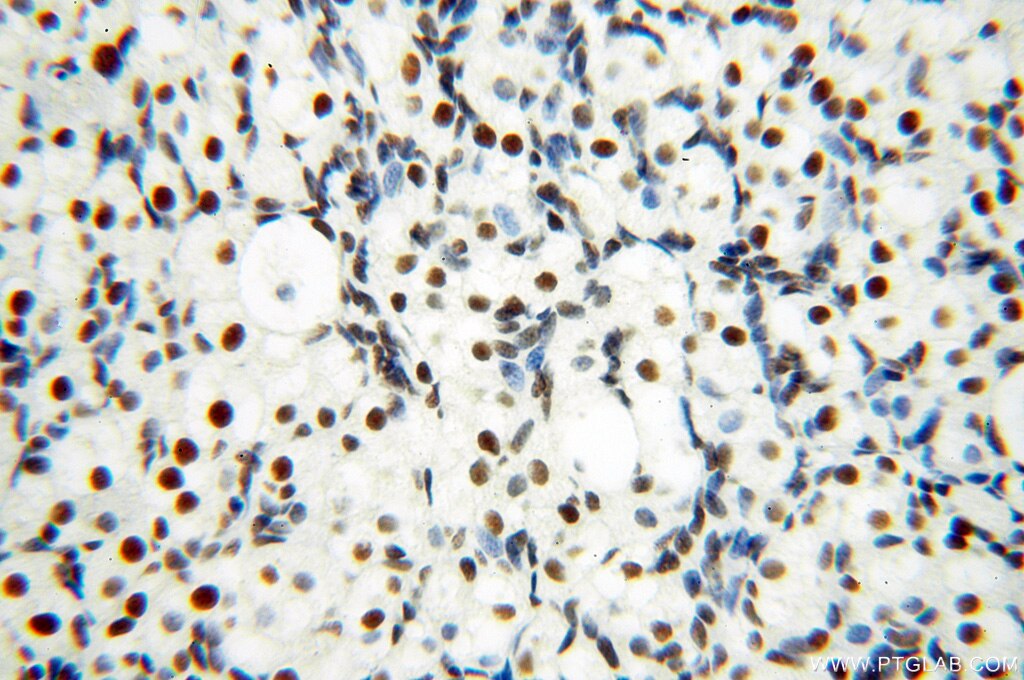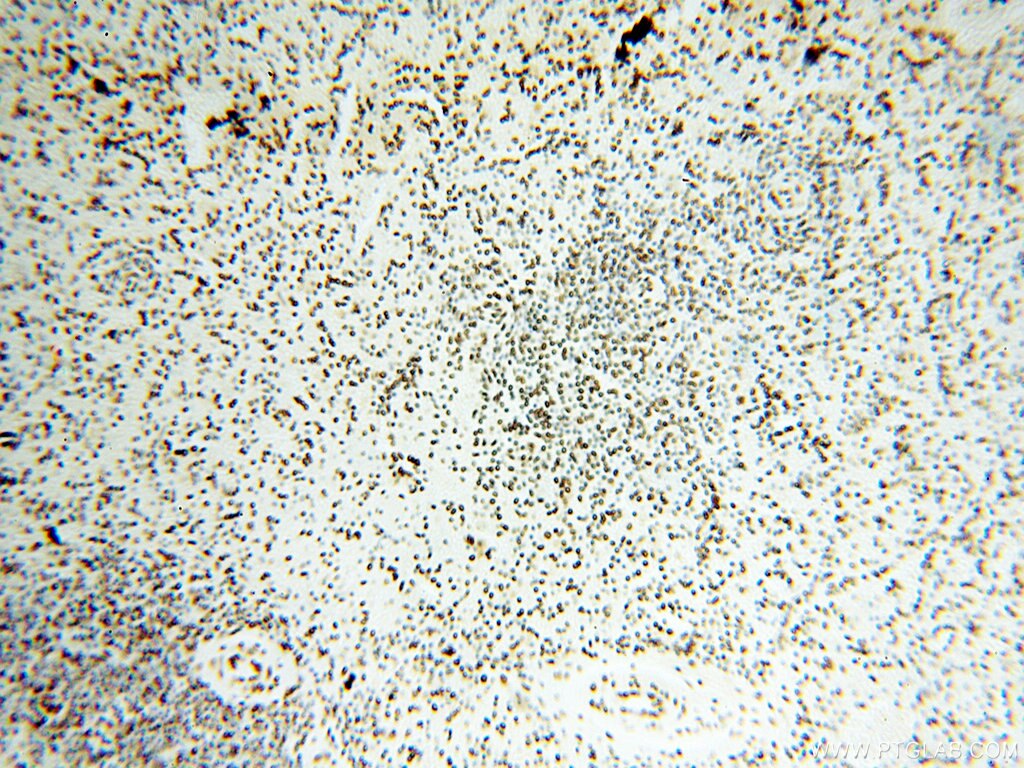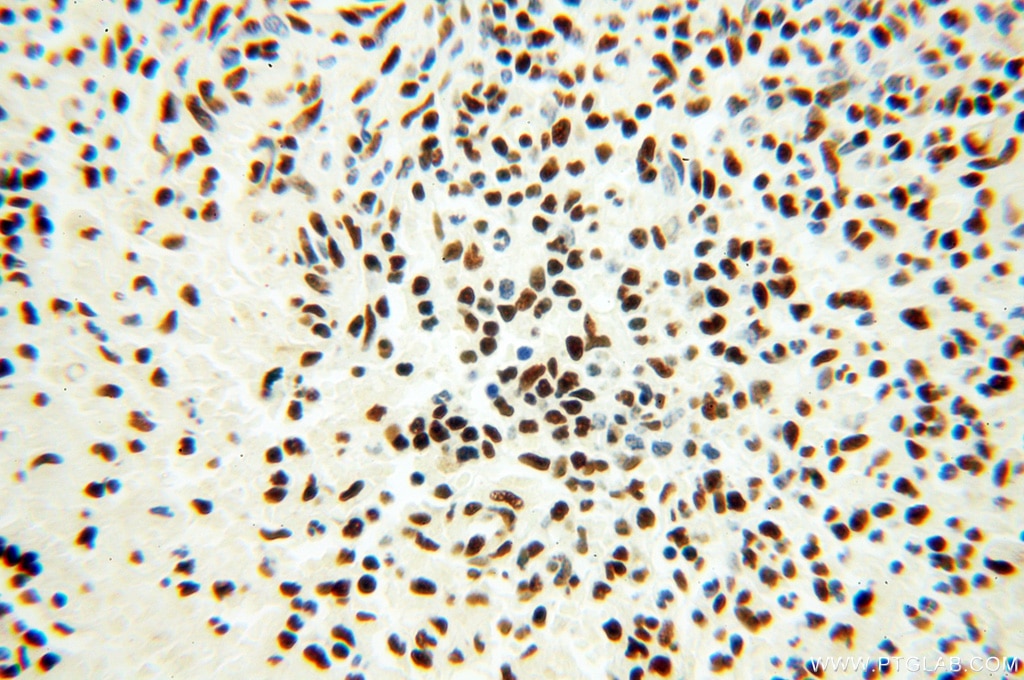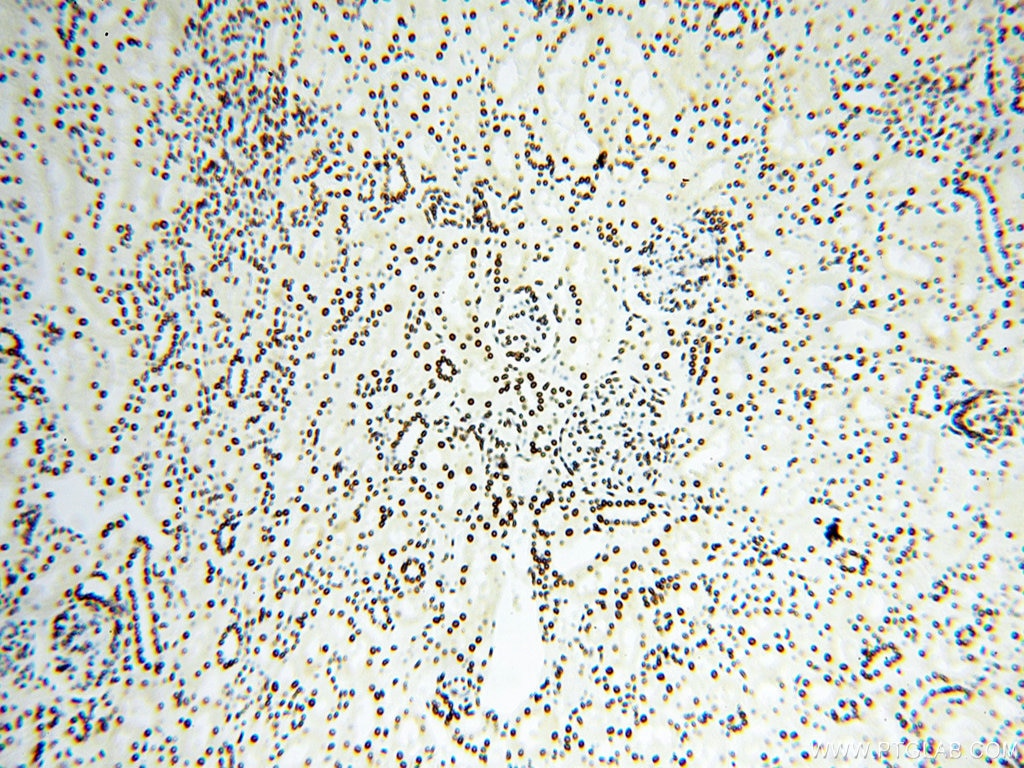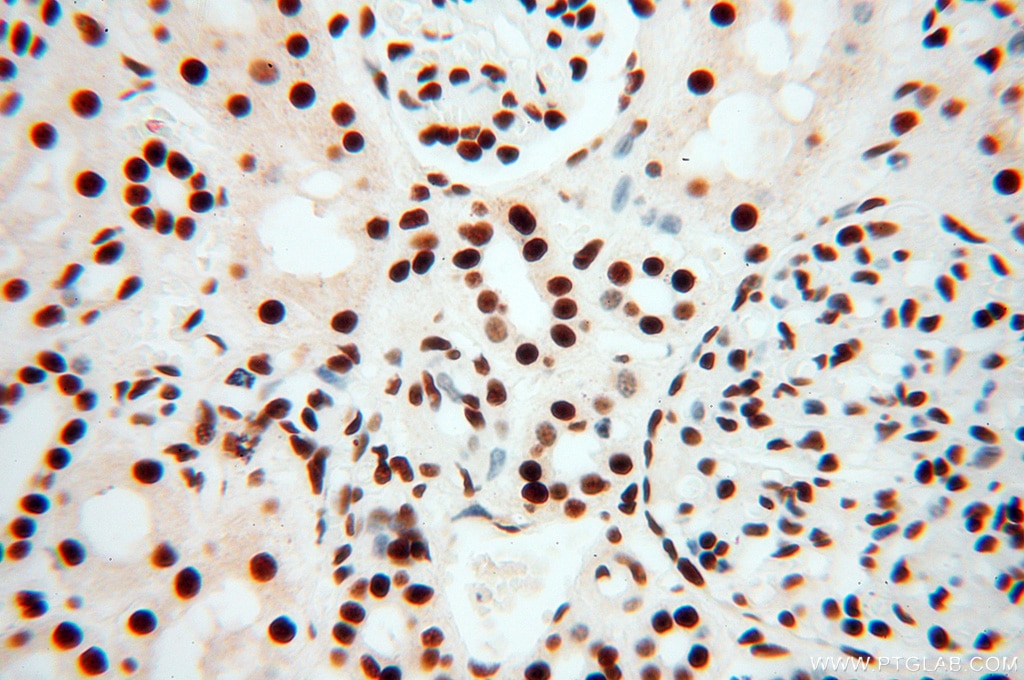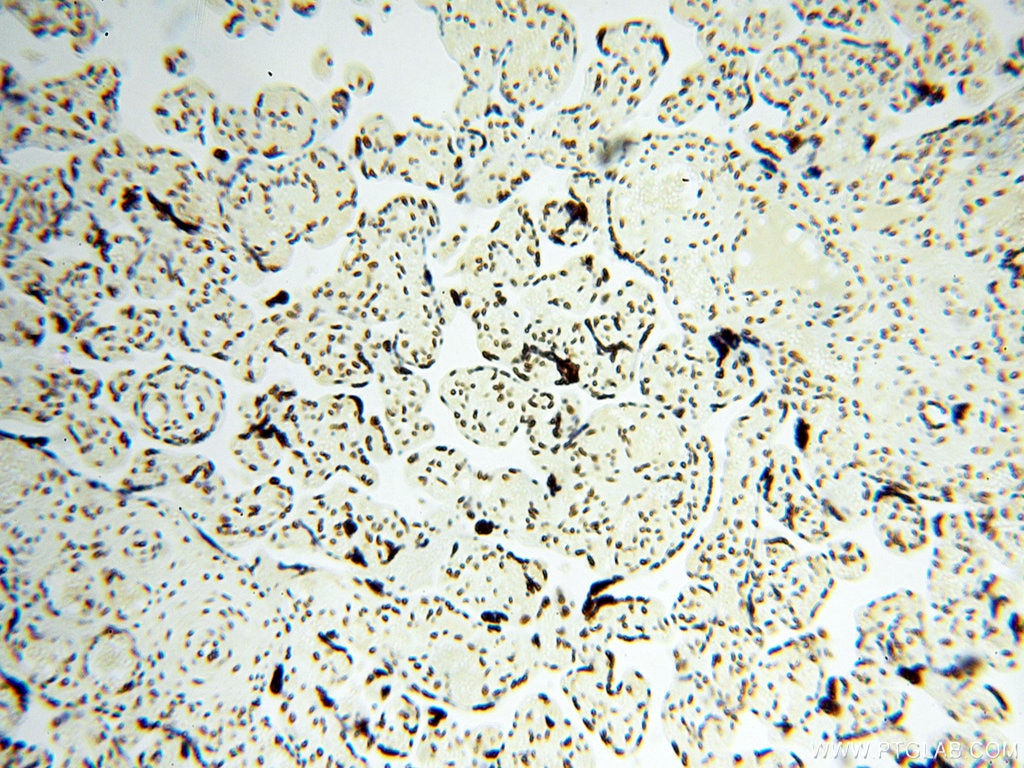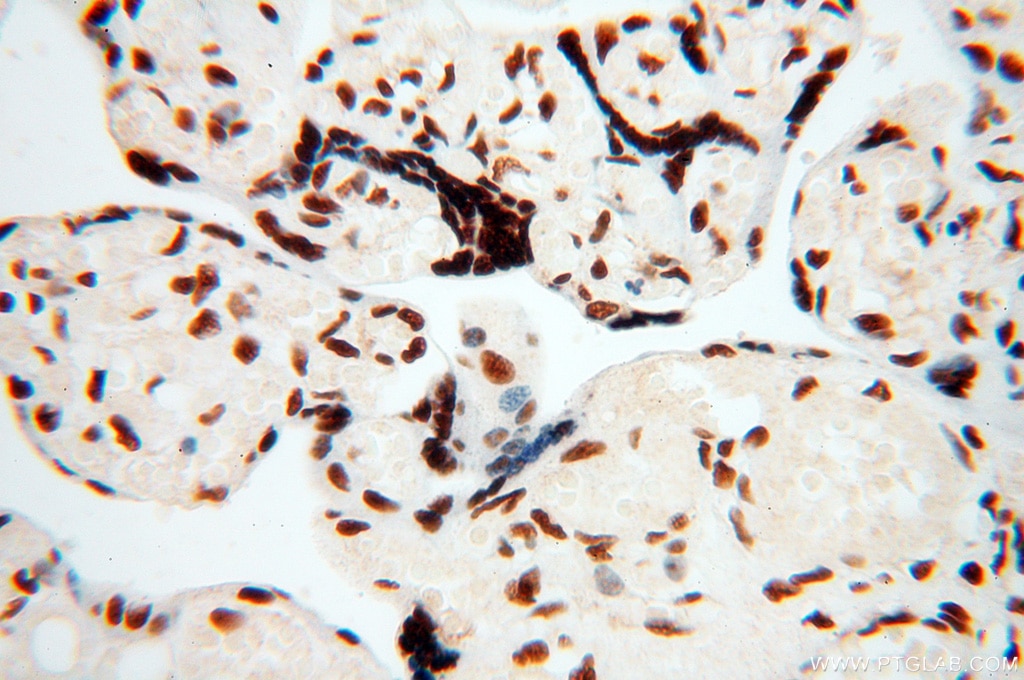SART3 Polyclonal antibody
SART3 Polyclonal Antibody for IHC, IP, WB,ELISA
Host / Isotype
Rabbit / IgG
Reactivity
human, mouse, rat
Applications
WB, IP, IHC, ELISA
Conjugate
Unconjugated
Cat no : 18025-1-AP
Synonyms
Validation Data Gallery
Tested Applications
| Positive WB detected in | Jurkat cells |
| Positive IP detected in | HeLa cells |
| Positive IHC detected in | human testis tissue, human liver tissue, human spleen tissue, human kidney tissue, human lung cancer tissue, human ovary tissue, human placenta tissue, human skin tissue, human brain tissue Note: suggested antigen retrieval with TE buffer pH 9.0; (*) Alternatively, antigen retrieval may be performed with citrate buffer pH 6.0 |
Recommended dilution
| Application | Dilution |
|---|---|
| Western Blot (WB) | WB : 1:2000-1:10000 |
| Immunoprecipitation (IP) | IP : 0.5-4.0 ug for 1.0-3.0 mg of total protein lysate |
| Immunohistochemistry (IHC) | IHC : 1:20-1:200 |
| It is recommended that this reagent should be titrated in each testing system to obtain optimal results. | |
| Sample-dependent, Check data in validation data gallery. | |
Published Applications
| WB | See 1 publications below |
| IHC | See 1 publications below |
| IP | See 2 publications below |
Product Information
18025-1-AP targets SART3 in WB, IP, IHC, ELISA applications and shows reactivity with human, mouse, rat samples.
| Tested Reactivity | human, mouse, rat |
| Cited Reactivity | human, mouse |
| Host / Isotype | Rabbit / IgG |
| Class | Polyclonal |
| Type | Antibody |
| Immunogen | SART3 fusion protein Ag12590 |
| Full Name | squamous cell carcinoma antigen recognized by T cells 3 |
| Calculated Molecular Weight | 963 aa, 110 kDa |
| Observed Molecular Weight | 110-120 kDa |
| GenBank Accession Number | BC093784 |
| Gene Symbol | SART3 |
| Gene ID (NCBI) | 9733 |
| RRID | AB_2254228 |
| Conjugate | Unconjugated |
| Form | Liquid |
| Purification Method | Antigen affinity purification |
| Storage Buffer | PBS with 0.02% sodium azide and 50% glycerol pH 7.3. |
| Storage Conditions | Store at -20°C. Stable for one year after shipment. Aliquoting is unnecessary for -20oC storage. 20ul sizes contain 0.1% BSA. |
Background Information
The process of mRNA splicing required assembly of pre-mRNA into a large, dynamic RNA-protein complex, in which 5 small nuclear RNAs and more than 50 protein components are incorporated into functional small nuclear ribonucleoproteins(snRNPs). SART3 interacts with U6 snRNA and functioned as a U6-specific recycling factor responsible for regeneration of base-paired U4/U6 snRNPs from post-spliceosomal free U4 and U6 snRNPs. Also it can interact and regulate Tat transactivation activity, and act as a cellular factor for HIV-1 gene expression and viral replication.
Protocols
| Product Specific Protocols | |
|---|---|
| WB protocol for SART3 antibody 18025-1-AP | Download protocol |
| IHC protocol for SART3 antibody 18025-1-AP | Download protocol |
| IP protocol for SART3 antibody 18025-1-AP | Download protocol |
| Standard Protocols | |
|---|---|
| Click here to view our Standard Protocols |
Publications
| Species | Application | Title |
|---|---|---|
J Biol Chem Identification of a 35S U4/U6.U5 Tri-snRNP Complex Intermediate in Spliceosome Assembly. | ||
Mol Cell Biol USP15 deubiquitinates TUT1 associated with RNA metabolism and maintains cerebellar homeostasis. | ||
Aging (Albany NY) SART3, regulated by p53, is a biomarker for diagnosis, prognosis and immune infiltration in hepatocellular carcinoma |
